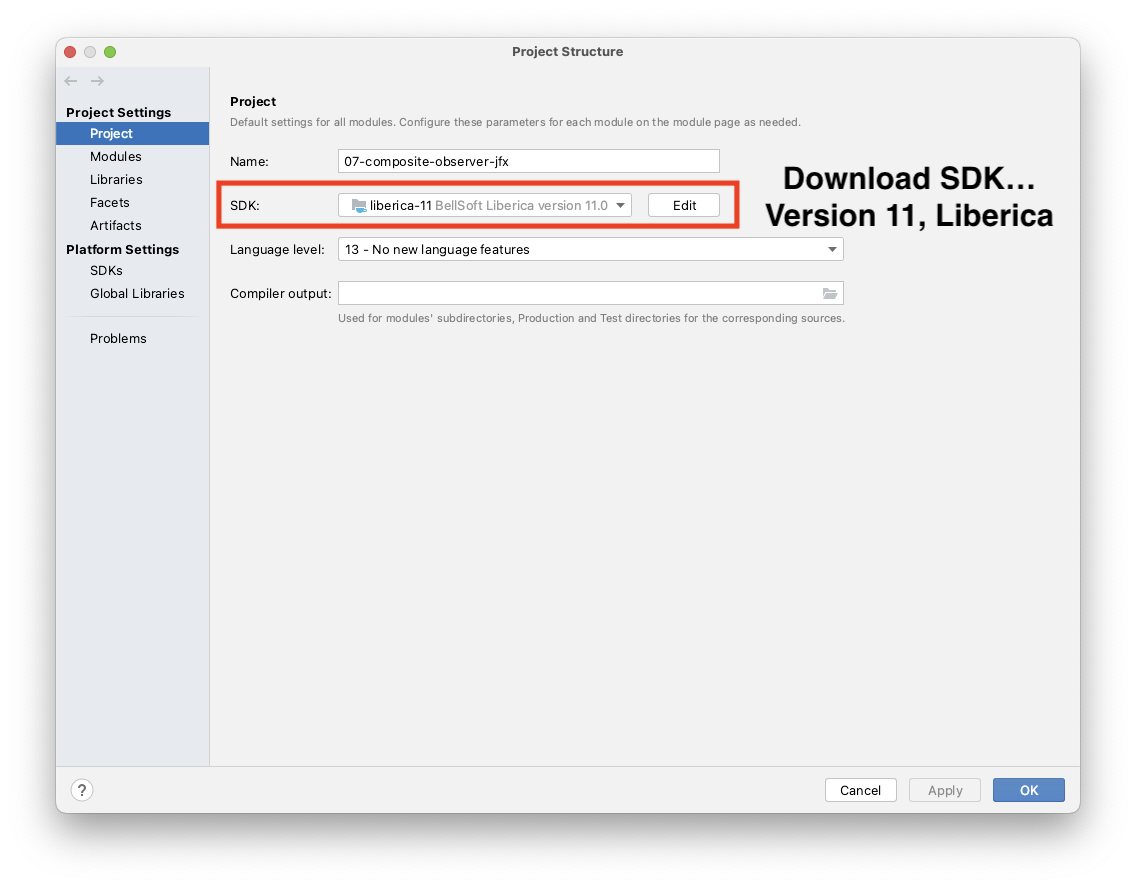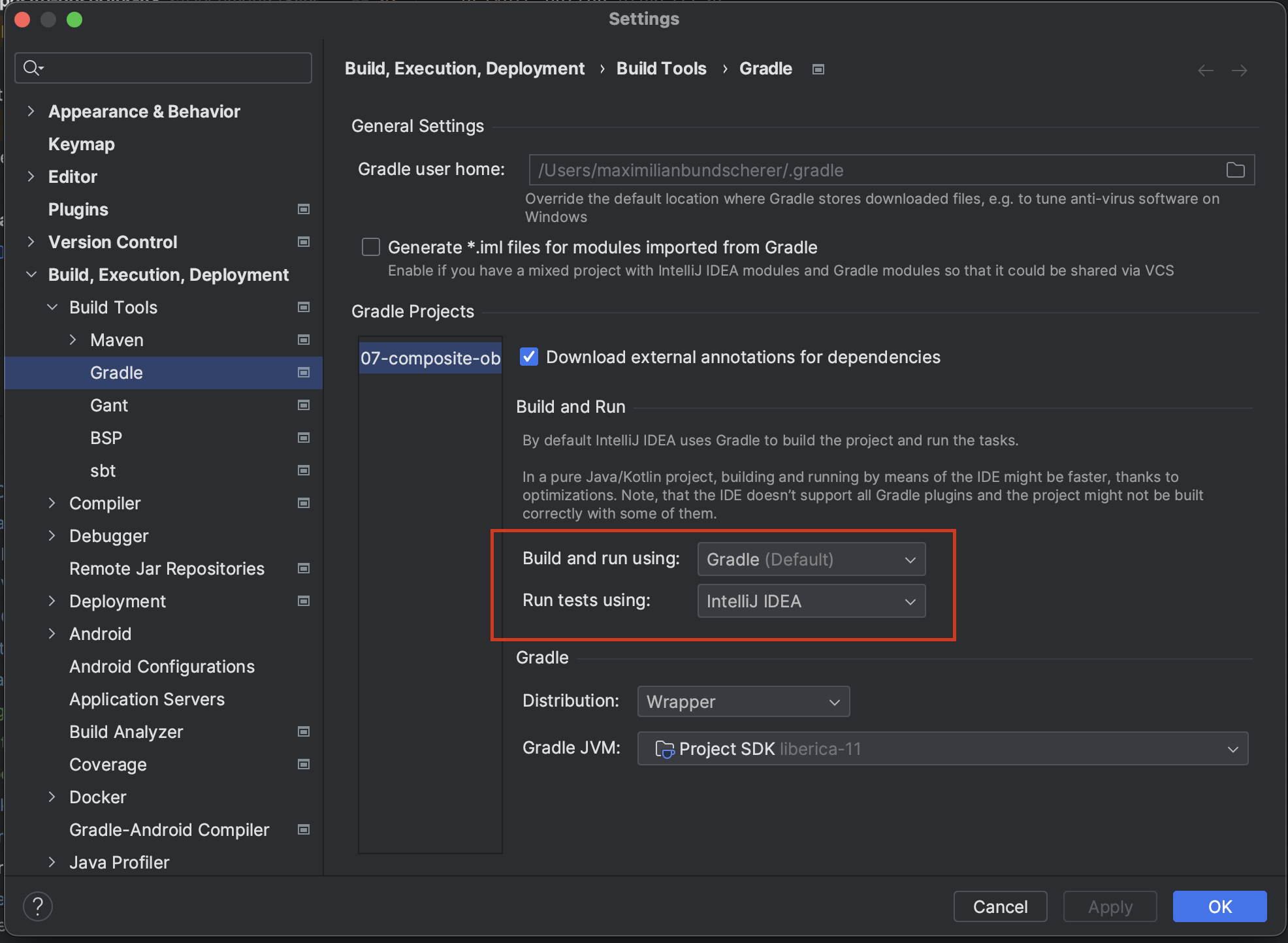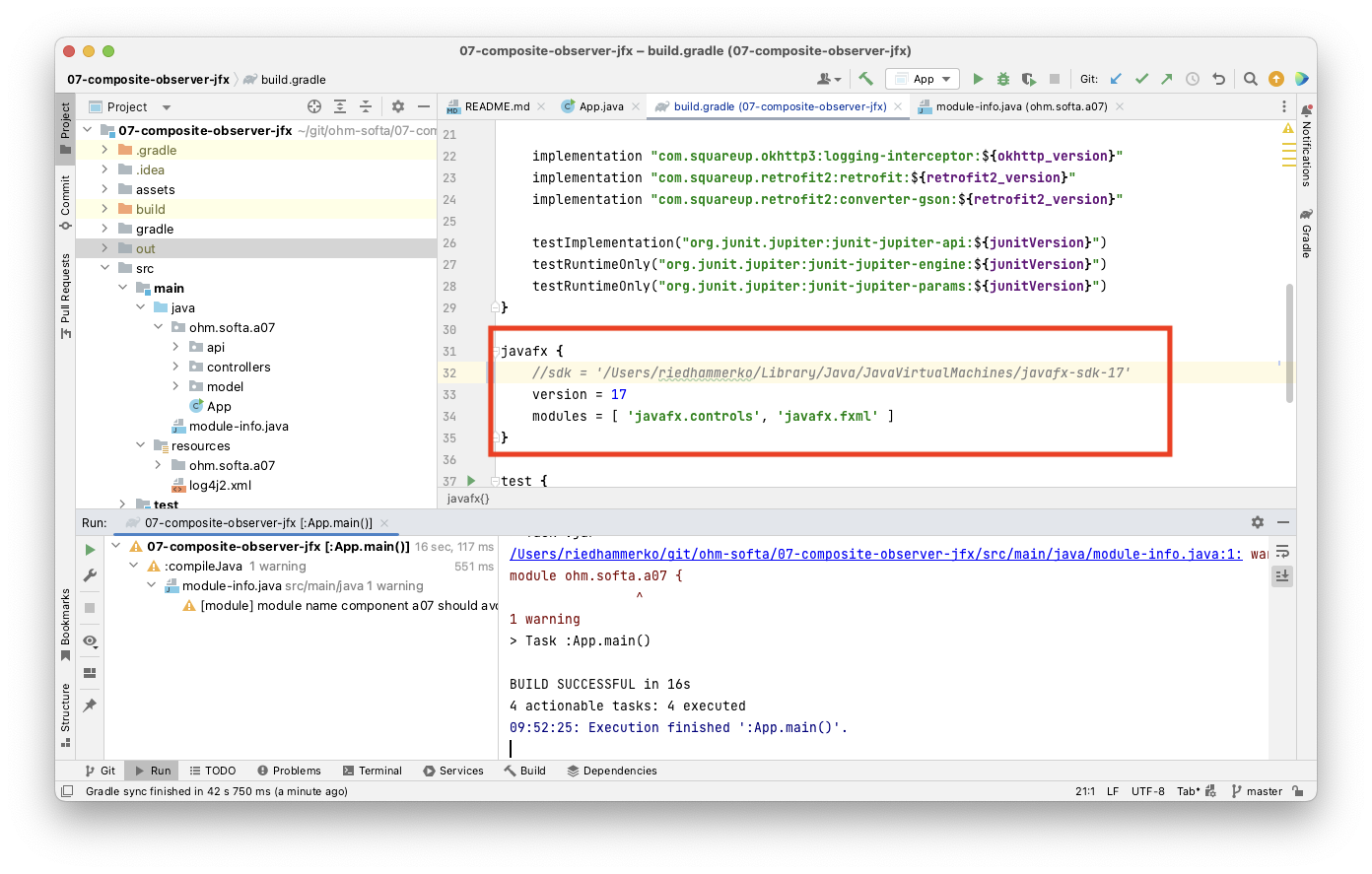This is an assignment to the Software Architecture class at the Technische Hochschule Nürnberg.
In this assignment, you will
- discover the model-view-controller (MVC) approach
- use the OpenMensa API
- review annotations for JavaFX and Retrofit
- see the composite pattern in action
- use variants of the observer patterns.
At the end of the day, you will have implemented a little app that retrieves the current meal plan of the cafeteria. You can also opt for a (slightly more complex) example using Android.
Note: JavaFX has been removed from OpenJDK starting with Version 9. This assignment is configured to use the
org.openjfx.javafxpluginplugin, which requires Java 11. If you prefer, use Java8 and remove the plugin and thejavafxsection from thebuild.gradle. The easiest way to make this assignment work is to use the liberica JDK, which includes JFX.
To get started, familiarize yourself with the given files of this project.
App.java: This is the entrypoint to your application. Themainmethod launches the JavaFX application, which is started instart. Nothing needs to be changed here.model.Mealmodels an individual meal; the API will return aList<Meal>which is our modelapi.OpenMensaAPIis the interface that should describe the service; used by Retrofitresources/main.fxml: XML specification of how the GUI should look like, the view.controllers.MainController: the main GUI controller that we will be working on.
Examine the MainController class and main.fxml view definition.
You can see that the GridPane in the XML is linked to (an instance of the) MainController.
The buttons have an fx:id which match attributes annotated with @FXML and named just like the fx:id.
The initialize() function shows how to add an event listener to a buttons.
As you can see, the ListView interface is generic and uses an item list which should be ObservableList<T>.
- Modify the controller so that it has an attribute of type
ObservableListas well as attributes for the close button and vegetarian checkbox. - Add event handlers for both and try modifying the content of the above list; the interface name suggests that the list of observed by the list view, i.e. changes in the data structure should be reflected in the GUI.
Now that you understood the basic GUI elements and how to "bring them to life", let's look at where and how to get the data.
The OpenMensa API is an API to retrieve the menu of a certain day of a certain canteen. In the previous assignment, we used Retrofit to interact with the API. This time, we will use it again -- but don't worry you won't have to implement any TypeAdapters or anything else, it's straight forward this time.
- Add the method
getMealsto the interfaceOpenMensaAPI(as shown in the following UML). Make sure to use the correct annotations to make the proper call. - Complete the test in the class
OpenMensaAPITeststo ensure that your implementation is working correctly.
Hints:
- As shown last week, parameters of methods have to be mapped to parameters in the annotation. The inline comment in the interface shows the actual query we want to produce, which requires canteen id and date (Hohfederstr. is 269).
- The
Mealclass is provided. - Check out the
setup()provided inOpenMensaAPITests: it adds an interceptor to Retrofit that will print out every request (and response) on the logcat.
Change your code so that once you click the refresh button, it retrieves today's menu, and renders the dishes' names on the list view.
Hints:
- You can get today's date from the
CalendarAPI using theSimpleDateFormathelper class:
SimpleDateFormat sdf = new SimpleDateFormat("yyyy-MM-dd", Locale.getDefault());
String today = sdf.format(new Date());- You will need to map the list of
Meals to a list ofStrings. - It is discouraged to run code on the UI thread; use the
Call.enqueue()instead of theCall.execute()method, and pass it aCallback<>handler. - In the network callback, make sure to check if the response was successful, by checking
response.isSuccesful()(which returns true for2XXcodes).
The last part is to implement the filter for vegetarian meals only.
Unfortunately, the API does not expose any marker so we will use a simple workaround:
a meal is vegetarian if none of the notes contains the string "fleisch".
Note: The solution is really simple, no regular expressions or alike needed.
- Add a
isVegetarian()method to theMealclass using the above workaround. - Change your code so that it filters the results if the checkbox is checked.
Note: Kudos if you can also trigger a refresh if the checkbox selection changes.
Download the SDK manually, or use the IntelliJ built-in SDK downloader (select version 11 to see liberica).
Optional: Configure IntelliJ to use Gradle and set the Gradle VM to liberica
Comment out the hard-coded SDK path; liberica contains JFX already.



